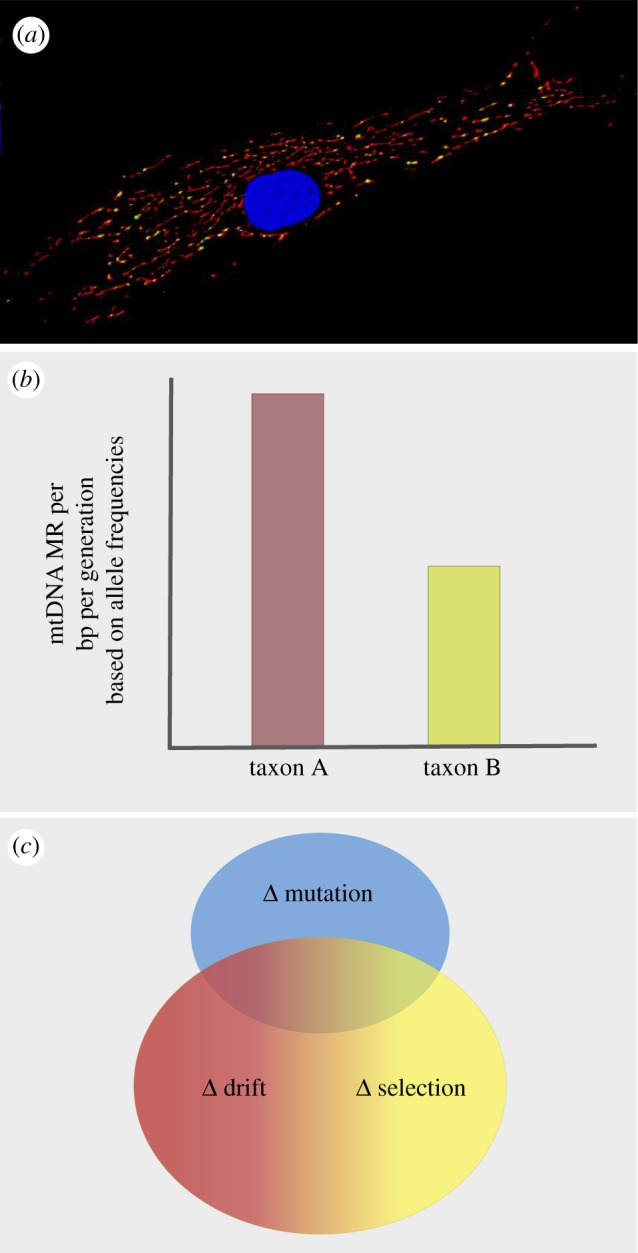Figure 1.

(a) Photo of a human fibroblast. The nucleus (blue) is surrounded by the mitochondrial matrix (red) which contains the numerous mtDNA nucleoids (stained green, but appear yellow because of the overlay). Heteroplasmy (more than one version of the mtDNA in a particular cell) can be the result of mutation (faulty DNA replication or unrepaired DNA damage) or biparental inheritance of mtDNA. Photo credit: Amanda Bess/Joel Meyer. (b) Mutation rate estimates, which can differ among genotypes, populations and species, are based on sequencing the genome and counting the frequency of new, mutant mtDNA alleles in either mutation accumulation lines or parent-offspring trios. (c) While apparent differences in mtDNA MRs illustrated in (b) could be explained by differences in MRs (top circle; blue), changes in mtDNA allele frequencies over time can also be the result of genetic drift and intracellular selection—two inversely correlated evolutionary forces (bottom circle; red and green)—which also can shape allele frequencies in heteroplasmic lineages and obscure the estimation of the MR.
